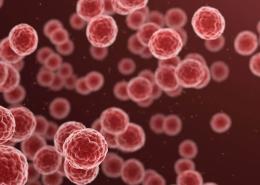The Process of Naming Pharmaceutical Drugs

Micronase. Daypro. Tessalon. Each of those names began on a list of hundreds of options, and the process to approve that name may have begun years prior to even the drug’s approval.
The first part of this two-part series on how drugs are named explored the process for coming up with the generic name for a medication. This article explores how drugs get their brand name.
Coming up with a safe brand name
Unlike generic names, brand names aren’t tied to particular suffixes, and that allows for more creativity, says Michael Quinlan, who is senior manager, trademark development, within the customer analytics and insights group with Pfizer. Plus, he adds, there’s a certain cache that comes with creating a drug’s brand name. Think about it. When you go to the store to purchase a pain reliever, do you tell yourself that you’re headed out to pick up some ibuprofen, or do you think about it by its brand name, Advil?
“Pharmaceutical companies tend to promote by their brand name because that’s always going to be our name" says Quinlan. "Once the patent expires and generic products can be introduced into the marketplace they use the generic name, whereas our brand name is only able to be used by us.”
The names are meant to be representative of the drug in some way. “They can range from abstract ideas, tonality, strong sound or gentle sound. It can be imagery. You hear a word and it brings something positive to mind, or a nice association that isn’t a claim,” says Quinlan. He shares the example of Lyrica, which is used to treat nerve and muscle pain and calls to mind lyrics or music. Viagra, used to treat erectile dysfunction, elicits vitality and vigor. IBRANCE, a breast cancer treatment summons inspiration, embrace, vibrancy.
Similar to developing the generic name for medications, there are a number of rules that apply to developing the brand name for medications. For starters, the name can’t make an overt claim about what it does, nor can it be promotional. It should avoid any use of a generic name stems (like “afil”), because that could be confusing.
Knowing that, the process works like this: A team at Pfizer will often work with an outside agency to come up with a potential list of about 200 names, and that list will need to be dramatically reduced. In the end, The Food and Drug Administration (FDA) will review only one proposed name at a time, and the European Medicines Agency (EMA) will review only two.
“To get there is a lot of effort,” says Quinlan. “Think of it as a funnel, or like sand through the hour glass: that one grain that makes it through the bottom is what we hope is its global brand name, to be used in as many countries as possible.”
Culling the list
The narrowing-down process begins with an online survey, which is circulated to key team members for that product within Pfizer and reduces the list of 200-plus names down to about 100 of the more preferred names. Then, a team whittles that list down further through a process of elimination that includes:
Trademark screening and clearance. A team of attorneys scrutinizes each name to make sure that name is truly unique. “All companies developing drug brands have to be diligent that it’s not getting too close to other companies brand names, or generic names for that matter,” says Quinlan.
Linguistic checks. Does the drug name translate ok? The goal is to have a product that is appealing on a global scale, so it’s important to make sure it sounds and reads okay, regardless of the language or dialect. “We want to make sure the brand name is checked in major world languages to make sure the name in its entirety does not mean or imply a word or phrase that would be inappropriate or embarrassing,” says Quinlan.
Safety checks for interpretation during the prescription process. Safety is the major focus in naming drugs. If one medication name is confused with another, the mistake could have serious consequences. To avoid any confusion, the team at Pfizer works to ensure that proposed names do not look or sound like another that when coupled with an analysis of similar prescribing characteristics (dose strength, frequency, route of administration etc.) could produce a medication dispensing error. They’ll even do prescription simulation interpretation tests with verbal orders, computer entry orders and with handwriting to see if the name could be confused with another when written in a doctor’s potentially messy script. When drugs have an unexpected letter—such as the Q in Pristiq or the X in Xeljanz—it may have been chosen to make the name look more distinguishable.
Market research. The team will survey others, including health care professionals, to gauge how they respond to the different names, inquiring about areas such as safety as well as general likeability of the way the word looks, sounds and how memorable it is.
The final steps
All of those steps shorten the list to a final handful of just around three names. The team then selects the favorite name to submit to the FDA and their favorite two names to submit to EMA. At long last, they wait to find out if the name is approved.
While two to three years seems like a long time for a drug brand name to be developed, screened and ultimately accepted, Quinlan says it’s an important process and it’s designed with the patient in mind.
“We have this additional hurdle that no other industry really has,” says Quinlan, referring to the drug brand naming process requiring not only trademark clearance for a new name, but also health authority approval. But those steps are absolutely needed to ensure that every medication name is as distinct as it can be. “Our goal is to prevent confusion,” he says. “We want to make sure that they’re safe.”
Check out part one of our series on how generic drugs are named.
![]()





